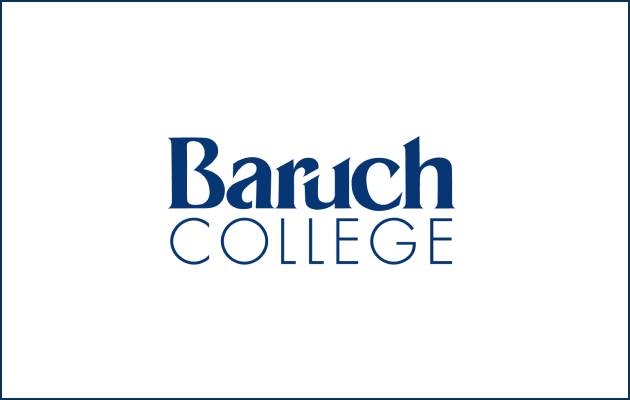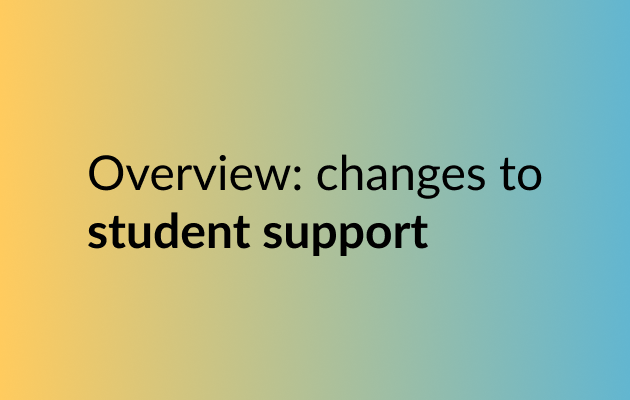CIC undergraduate interventions fall into three categories – changes to the introductory sequence, changes to student support, and changes to the major – which you can read about further below.
Changes to the introductory sequence
A welcoming and intentionally designed introductory computing sequence is essential to an inclusive computing environment. The CIC’s focus here stems from our observation that in the vast majority of CIC Partner Schools, once a student gets to the fourth course in the computing major they persist to graduation. As such, we work closely with Partner Schools to make the introductory sequence as inclusive and welcoming as possible.
In particular, we recommend these evidence-based interventions to the Introductory Computing Sequence.
We believe that a student should be able to discover computing in college, in an environment that welcomes true beginners. Indeed, CS is only offered (often as an elective) in 57% of U.S. high schools, those of which are located in the most privileged and well resourced geographies in the country. Therefore, computing departments must create a pedagogical infrastructure that properly handles the wide distribution of prior experience.
Read our opinion piece on addressing distribution of prior experience in the classroom.
Common assessment (i.e., shared assignments and exams) across sections of the introductory computing sequence is another powerful way to create a more inclusive learning environment. Because students arrive at the introductory computing sequence with wide-ranging levels of prior coding experience, common assessment ensures that all students achieve the stated learning goals and are ready to advance to the next class. Common assessment also makes it possible for students to choose which teaching assistant they see based on scheduling, learning style, or background, etc., rather than feeling they can only work with the one(s) assigned to their specific section.
Read our opinion piece on the relevance of common assessment to BPC goals.
By “contextualizing” the computing curriculum in different domains, students see its applicability to real world problems and how it connects to other disciplines. This pedagogical approach is enjoyed by all students, including those who are exploring computing for the first time. This has been investigated extensively by the computer science education research community.
Visit Momentum’s Undergraduate BPC Literature Database to learn more.
Building on the arguments in the point above, an even greater strategy is to have your CS0 (or CS1) also fulfill a general education requirement. This promotes discovery among an even wider group of students.
Changes to student support
Alongside a truly beginner-friendly introductory sequence and a right-sized major, it’s important to have robust co-curricular supports. The CIC works with Partner Schools to implement these evidence-backed changes to student support.
Increasingly, computing students receive much of their face-to-face instruction from teaching assistants (TAs). At many universities however TAs receive little to no training on how to teach and how to work with students that arrive with differing levels of prior experience. If there is training, it is often not centralized or consistent but the job of each individual faculty member to train the TAs assigned to their particular course or section. The CIC works with Partner Schools to develop and implement centralized processes to recruit, train and evaluate TAs to provide a more intentional, inclusive and consistent experience for students.
Read this SIGCSE paper to learn more about TA training and its connection to BPC.
As schools make changes to their intro computing course sequence and the degree, it is essential to update and align core co-curricular supports in parallel. Above all, it is paramount that computing leadership include academic advisors in their conversations about curricular and structural changes and empower advisors to help students navigate the different pathways.
Read an overview of BPC-focused student support interventions.
Many students will first be exposed to your degree plan on your website. As such, it is imperative that it be both accurate and welcoming. The CIC supports schools in making sure their websites contain multiple sample plans of study, including, for example, an option that does not assume calculus readiness.
Read the CIC’s Top Ten List for Making a Great “Major Requirements” page.
Changes to the major
The design and structure of a computing major itself, coupled with fair and reasonable major declaration policies, strongly contribute to the development of an inclusive computing department. The CIC recommends these evidence-backed changes to the computing major.
Departments need to carefully consider whether the number of required courses and prerequisite structure in their CS degree(s) are reasonable. They also need to ensure there are workable plans of study for all students, including transfer students and students who are not calculus-ready. And, in particular, we must ensure that progression in the required math curriculum is not hindering progression in computing.
There is growing evidence that GPA-based caps on who can become a computing major are at odds with our sector’s broadening participation in computing (BPC) goals because they favor students that enter university with prior coding experience. If a lack of resources means that a department feels it has no option but to cap enrollments of CS majors, the CIC suggests the department consider alternate strategies that can meet the department’s needs without sacrificing its BPC goals.
Read this CACM op-ed on the BPC implications of GPA-based enrollment caps.
Read this Brookings brief summarizing issues around student access to lucrative majors.
Often referred to as CS+X in the literature, interdisciplinary computing majors (majors built at the intersection of two or more fields of study) are a powerful strategy for broadening participation in computing. The CIC is currently working with 9 universities to codify how best to implement such majors within different university contexts. This initiative is based on the research done at Northeastern University in creating 46 interdisciplinary computing majors.
Read this SIGCSE paper about implementing CS+X at your institution.












